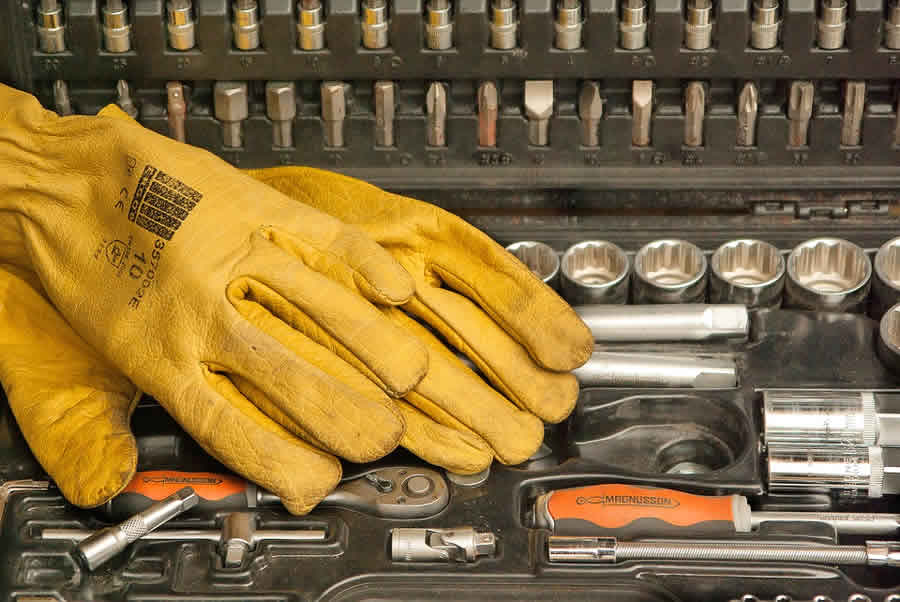NFPA 70E article 130.7(B) Care of Equipment discusses the basic requirements for the care and maintenance of electrical personal protective equipment. Because this equipment may save a life one day it is important that it is stored in such a way to protect it from damaging agents such as moisture, dust, or other deteriorating agents like chemicals, heat, and sunlight. Protective equipment shall be maintained in a safe, reliable condition.
Arc Flash Clothing
For arc-rated garments to protect you properly, they need to be kept clean. Flammable soiling or contamination on the surface of the arc-rated clothing can reduce or even void the rating. This includes oils, grease, paints, and other chemicals.
The clothing must also be free from tears, cuts, or rips. Garments that are not suitable for use must be removed from service. Repairs can be made but be sure to follow the manufacture’s specifications. In most cases, this cannot be achieved at home. Simply sewing-up a tear or applying an iron-on patch is not an acceptable practice and doing so could put you or your employees in harm’s way.
Before starting a laundering program always check with the manufacturer first. In most cases, the laundering instructions will be written on a tag attached to the garment. Visit the manufacturer’s website or consult ASTM F2757-16, Standard Guide for Home Laundering, Care and Maintenance of Flame, Thermal and Arc Resistant Clothing for more information regarding home clothing maintenance or ASTM F1449, Standard Guide for Industrial Laundering of Flame, Thermal, and Arc Resistant Clothing if an outside vendor will be handling the laundering duties.
Here are some general things not to do as they apply to home or industrial laundering of arc-rated clothing:
- Do not use fabric softener when washing or use sheets when drying.
- Do not use chlorine bleach. Some manufacturers may also advise against the use of peroxide bleach as well.
- Do not apply DEET insect repellents. It can act as a fuel in large quantities.
- Do not apply spray starch.
- Do not wash AR clothing with other clothing
How Many Times Can I Wash Them?
This is a common question and the simple answer is that the arc-rated protection should not wash out or wear out, in other words, if properly cared for it should last the lifetime of the garment. However, FR clothing that is worn out needs to be retired. Areas such as elbows or knees typically wear out first. If the material in these areas becomes thin or loses its color this is a good indicator that the clothing has reached its useful life. Again, check with the manufacturer for end of life instructions and guidance.
Voltage Rated Gloves
Rubber insulating gloves can be damaged by many chemicals, especially petroleum-based products (oils, gasoline, hydraulic fluid) solvents, hand creams. If any rubber glove is exposed to chemical contaminants or suspected of any other physical damage, it should be cleaned, inspected, and electrically re-tested.
- To clean rubber-insulating gloves, wash with mild soap and rinse thoroughly with water.
- Avoid disinfectant sprays or other chemical cleaners and disinfectants. These chemicals can damage the rubber.
- Air-dry the glove away from direct sunlight and sources of heat.
- Store dry rubber gloves in a protective bag when not in use, away from excessive heat and direct sunlight.
- Remove the leather protectors and place glove in the bag with the finger tips facing up.
- Do not store gloves folded, creased, inside out.
- Do not place heavy objects on top of the gloves that could cause stretching or compression.
Leather Protectors
Rubber insulating gloves are often used to protect the hands from the heat generated during an arc flash as well as protecting the worker from electric shock. It is important to remember that the leather protectors worn over the rubber gloves need to be free from contaminants that could ignite if an arc flash were to occur. Be sure to inspect the leathers before using them inside of the arc flash boundary. Suspect gloves should be removed from service and replaced with leather gloves meeting ASTM standard F696
Applicable Standards
- ASTM F496, Standard Specification for In-Service Care of Insulating Gloves and Sleeves
- ASTM F1449, Standard Guide for Industrial Laundering of Flame, Thermal, and Arc Resistant
- Clothing
- ASTM F2757, Standard Guide for Home Laundering Care and Maintenance of Flame, Thermal, and Arc Resistant Clothing
- ASTM F696 Stand Specification For Leather Protectors For Rubber Insulating Gloves and Mittens
ASTM – American Society of Testing and Materials
[activecampaign form=3]






